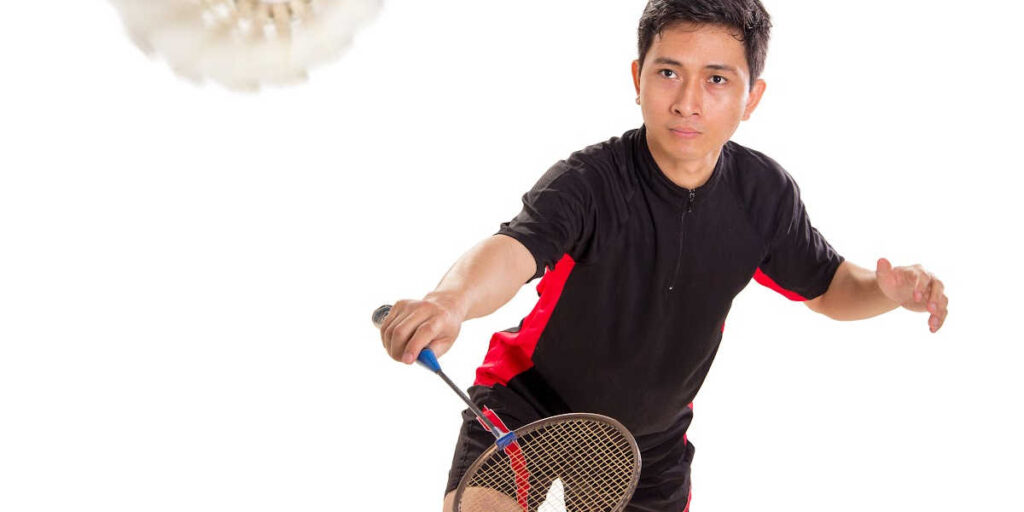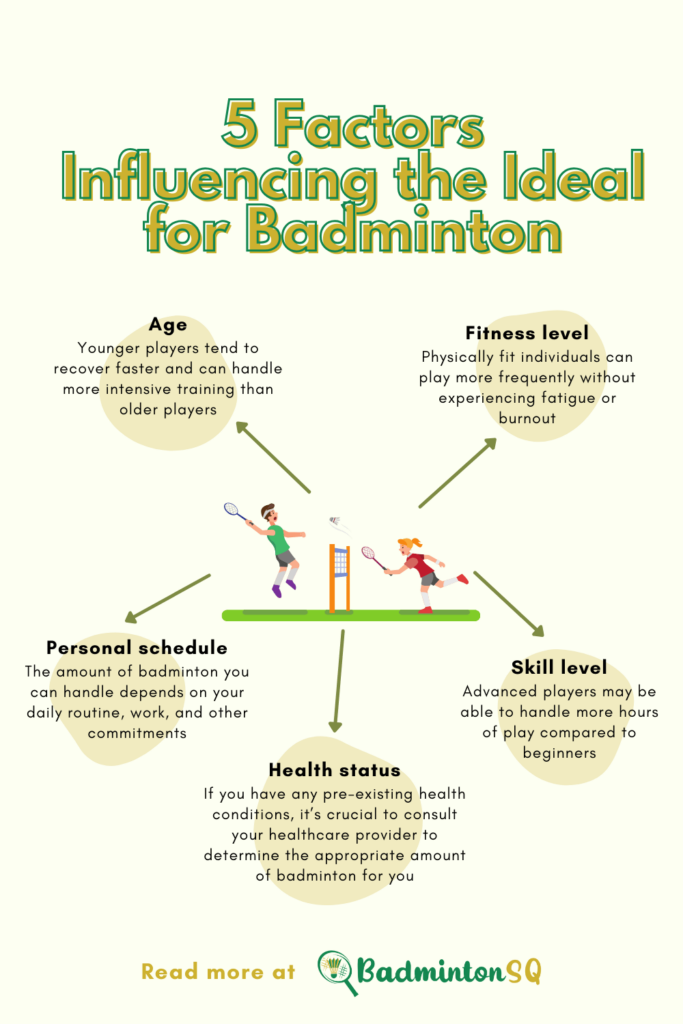Most players start their badminton journey with a singles game. Most of them recall playing with their cousins or friends, which sparked their interest in the game. While playing for fun is great, the rules are strict in a professional game. You can’t apply the made-up rules of your cousins.
So, if you are interested in playing badminton singles professionally, you must know what lies in this article. We will cover everything from court layout to the basics of badminton singles. So, let’s begin.

What Are the Dimensions and Markings of a Badminton Singles Court?
A badminton singles court is marked by yellow or white lines. It is 44 feet long and 17 feet wide. A doubles court is usually wider than this. A net is placed in the center, dividing the court into two halves. The height of the net is 5 feet at the sides and 5.1 feet at the center.
- There’s a short service line 6.6 feet from the net and a long service line 15.6 feet from the net. You are supposed to serve only from the region between these two lines.
- The long service line also acts as the boundary of the singles court.
- A center line extends from the long service line to the short service line and divides each court into the left and right sides.
You may read: Badminton Court Size & Dimensions
What Are the Serving Rules for Badminton Singles?
The serving rules are very simple in badminton singles.
- The first service in the game must be from the right side of the court.
- You must always serve diagonally.
- The shuttlecock must not touch the net during service.
- If you win the rally, the next service is yours. Otherwise, it is passed to your opponent.
- If you have an even score (0, 2, 4, …), you serve from the right court. If you have an odd score (1, 3, 5, …), you serve from the left court.
- The shuttlecock must be below your waist when you hit it for serving.

What Are the Scoring Rules for Badminton Singles Matches?
Badminton singles matches are played to the best of three sets. The player winning two out of the three sets is declared as the winner. Each set consists of 21 points. The player first scoring 21 points wins that set. But if the score is tied at 20-20, then the winner needs to score 2 more points (i.e. 22 points) to win the set.
A player scores a point when the opponent:
- Hits the shuttlecock out of bounds.
- Hits the net with the shuttlecock.
- Fails to return a legal shot.
- Commits a service fault.
Faults and Penalties in Badminton Singles Matches
In badminton singles, various faults and penalties can occur during a match. Here’s a list of some common faults and penalties.
Service faults:
- Serving above the waist.
- Not serving diagonally across the net.
- Stepping on the service line while serving.
- Serving from outside the service area.
- Serving from the wrong side of the court.
- Moving the feet before the serve is struck.
- Serving before the opponent is ready.
Playing faults:
- Touching the net with the racket or body.
- Hitting the shuttlecock outside the boundaries of the court.
- Hitting the shuttlecock before it enters your court over the net.
- Taking two consecutive hits on the shuttlecock.
- Deliberately obstructing the opponent’s shot.
Foot faults:
- Stepping on or over the boundary lines while playing a shot.
- Lifting or dragging the foot while playing a shot
Unsportsmanlike conduct:
- Verbal or physical abuse towards opponents or officials.
- Deliberately delaying the game.
- Excessive celebration or taunting.
- Using a racket with broken strings or other defects.
- Throwing or damaging the racquet, shuttlecock, or net in frustration.
Basic Techniques and Skills Needed for Badminton Singles?
Let’s take a look at some of the basic techniques and skills required in a badminton singles game.
Service
There are three main types of services you can use in a single game.
Short Serve
In this serve, gently hit the shuttlecock just over the net to your opponent’s court. Don’t give your opponent wide angles to hit. This serve will force your opponent to lift the shuttlecock. Be prepared to defend both front and back of the court.
Long Serve
In a long serve, you strategically hit the shuttlecock to land at the back of the court. This serve is especially useful if your opponent is too close to the net. They won’t have enough time to cover the court. This can open you up for an attack, so choose your response wisely.
Flick Serve
The flick serve is very similar to the short serve. You just flick your wrist while hitting to change the direction of the shuttlecock. This will take your opponent by surprise.
Grip and Stance
There are two main types of grips in badminton – forehand and backhand.
Forehand Grip
The handle of the racket sits diagonally across the base of the thumb and the pad of the index finger. It gives you better control during strokes.
Backhand Grip
The handle rests on the side of the dominant hand with the thumb wrapped around the bevel. You can put greater power and maneuverability into these strokes.
You can alter the grip type based on what you need to achieve from the shot.
Along with the grip, you must also focus on your stance. Your stance is how you stand during your shots. Keep your feet shoulder-width apart and evenly distribute your weight on both legs. Slightly bend your knees forward to facilitate quick movement.
Footwork and Movement
Footwork is extremely important in badminton singles. You need to cover the entire court by yourself. You must be able to quickly move from one part of the court to another.
Pro Tip: Always return to the center of the court after every hit.
If you are in the center, you can quickly move in all directions as you are at an equal distance from all borders. You must practice footwork patterns to cover the entire court effectively.
Here are some footwork drills that you can practice to improve your movement:
- Lunges
- Side Shuffles
- T Jump
- Square Jump
Stroke Techniques
Badminton players use a number of strokes to have a variable effect on the shuttlecock. Each stroke delivers the shuttlecock in a different way. Let’s take a look at some of the common strokes in badminton that you can use in your singles game.
Clears
A clear is a high and deep shot that drives the shuttlecock to the back of the opponent’s court. It forces them to retreat to the rare-court area. These can be defensive or offensive, depending on the situation.
Smashes
A smash is a powerful stroke that first goes overhead but is aimed to land downwards. It is a very swift movement done with the intention of winning the point outright. You need strong shoulder rotation to generate power. The secret of landing good smashes is good timing.
Drops
A drop is a deceptive shot. It makes the opponent believe the shuttlecock is going to the mid-court, but it lands softly near the net. This forces the opponent to lunge forward. If your opponent is in the rare-court area, they might miss the shot, which gives you a point.
Drives
A drive is a flat and fast shot. It is hit across the court while keeping the shuttlecock low. This challenges the opponent to react quickly. Drives can be used offensively to test the opponent’s defense or defensively to counter an attacking shot.

Conclusion
Badminton singles is a dynamic and challenging sport. It requires a combination of physical skill, mental focus, and strategic thinking. You must master the techniques, develop strong footwork, and employ well-defined offensive and defensive strategies for success.
This guide has equipped you with a solid foundation for your badminton singles journey. Practice your techniques consistently and keep a hunger for improvement.
Frequently Asked Questions
What are some good warm-up exercises for badminton singles?
Include dynamic stretches that target your legs, core, shoulders, and wrists in your warm-up routine for badminton. Exercises like light jogging, jumping jacks, and arm circles are also great options.
How can I improve my stamina for badminton singles?
Participate in high-intensity exercises that require a lot of energy. This will improve your stamina for badminton singles. Do cardiovascular exercises like running, swimming, or jumping rope. Do High Intensity Invertal Training (HIIT) regularly.
Where can I find badminton singles leagues to play in?
If you are a college student, contact your sports professor for upcoming games in your college or neighboring colleges. Join local clubs and community centers that organize badminton leagues to stay informed.
How can I avoid making unforced errors in badminton singles?
To avoid making unforced errors in badminton singles, you must focus on maintaining proper technique. Stay relaxed even under pressure and make shot selection smartly.
What is decision-making in badminton?
Decision-making in badminton involves choosing the best move or strategy during a match. This includes anticipating the opponent’s actions, strategizing shots, and maintaining the rally.
What is a badminton strategy?
A badminton strategy refers to game plans players use to gain an advantage over their opponents. It may include shot placement, deceptive movements, or exploiting opponent weaknesses.
What is the most common decision in badminton?
Putting pressure on the opponent is the most common choice made by pro players. Others include maintaining the rally or surprising the opponent.
